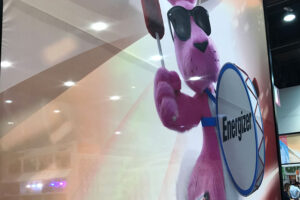By Ellen Campbell-Kaminski, VP of Marketing
It’s a question that has plagued event marketers for decades: what happens behind the scenes in the companies you work with to pitch your product or service? Why are some projects green-lighted and others that seemed a “sure thing” canceled altogether? This question was recently posed at the EDPA ACCESS 2016 annual conference. The good news: it is possible to demystify this issue with a better understanding of how companies operate and decision-making models.
Consideration One: Get a better understanding of the organizational characteristics of the company.
Think about a particular client and ask yourself: which resources are dedicated and which are shared? Exhibit managers and Event marketers are typically shared resources, managing multiple priorities and the (often conflicting) expectations of internal stakeholders.
Many of these individuals are drowning in data and responsibilities. So, what are they looking for? It’s a partner that is:
• Empathetic – Most people just want to be heard and understood.
• Proactive – Help keep them on track by reaching out about upcoming projects well in advance.
• Solution-Oriented – Always offer new ideas and suggestions for improvement.
Also, think about who in the organization is responsible for achieving revenue targets. Larger organizations tend to be highly matrixed which often means that multiple people have revenue goals and often there are both vertical and horizontal and shared goals. This can lead to conflicts, especially when one group is not performing according to plan.
Understanding organizational structures and how different divisions are performing can help predict when last minute changes to the tradeshow plan are likely. For example, when a division is underperforming, you might get last minute requests for extra demo stations. Tracking and researching your clients and their philosophy is the best way to become familiar with how an organization operates.
This is best achieved by:
• Asking questions – Ask key contacts and senior leaders how the company is doing, on a regular basis. Are new products in the works?
• Reading the company’s annual report
• Tracking data and news
Consideration Two: Understand common event scenarios that compel a company to have or modify their tradeshow presence and conduct stakeholder analysis to anticipate their likely perspective.
• Major new product launch: The Company has a new product that will be introduced at an industry-specific trade show.
• Acquisition/Integration: Company A was purchased by Company B, introducing recently integrated Company C to the industry.
The Takeaway:
• What implications do the different characteristics of the target company have on your account plans?
• What questions can you ask during discovery to identify organizational structure and decision-making culture?
• Who are the key decision makers and how can you positively influence them?
• What signals can you look for to indicate a deal might be veering off course?
You can’t always discern what goes on in the boardroom. But if you think through organization structures, analyze how decisions are made and how success is measured, and track a company’s news, you will be far better positioned when the inevitable changes come.









